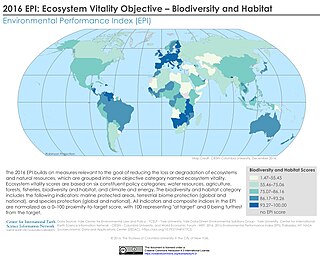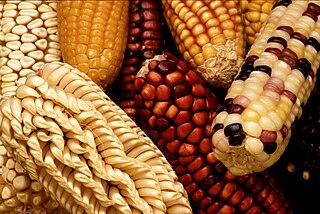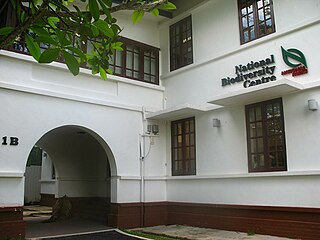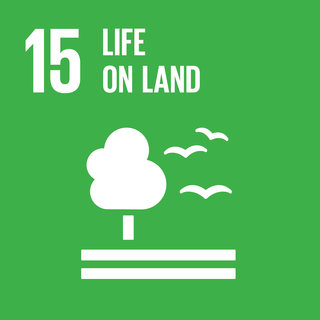This is a list of topics in biodiversity.
Main article: Biodiversity
 |
This is a list of topics in biodiversity.
Abiotic stress — Adaptation — Agricultural biodiversity — Agroecological restoration — All-taxa biodiversity inventory — Alpha diversity — Applied ecology — Arca-Net — ASEAN Center for Biodiversity — ASEAN Heritage Parks — Aquatic biomonitoring — Axe Lake Swamp State Nature Preserve —
Bank of Natural Capital — Beta diversity — BioBlitz — Biocomplexity — Biocultural diversity — Biodiversity action plan — Biodiversity and drugs — Biodiversity and food — Biodiversity banking — Biodiversity databases (list) — Biodiversity hotspot — Biodiversity in Israel, the West Bank, and the Gaza Strip — Biodiversity Indicators Partnership — Biodiversity informatics — Biodiversity Monitoring Switzerland — Biodiversity of Borneo — Biodiversity of Cape Town — Biogeography — Bioindicator — Bioinformatics — BIOPAT - Patrons for Biodiversity — Biorisk — Biosafety Clearing-House — BioSearch — Biota by conservation status (list) — Biosurvey — BioWeb — Body size and species richness — Box corer — Bray–Curtis dissimilarity —
Caribbean Initiative — Carta di Siracusa on Biodiversity — Cartagena Protocol on Biosafety — Center for Biological Diversity — Centres of Plant Diversity — Chresonym — Comisión Nacional para el Conocimiento y Uso de la Biodiversidad — Conservation Biology — Conservation Commons — Conservation ethic — Conservation in Papua New Guinea — Conservation reliant species — Conservation status — Conservation status (biota - list) — Convention on Biological Diversity — Critically Endangered — Crop diversity —
Data Deficient — Deforestation — Diversitas — Diversity-function debate — Diversity index —
ECNC-European Centre for Nature Conservation — Ecological economics — Ecological effects of biodiversity — Ecological goods and services — Ecological restoration — Ecology — Economics of biodiversity — Ecosystem diversity — EDGE species (list) — Effect of climate change on plant biodiversity — Eichler's rule — Endemic Bird Areas of the World: Priorities for Biodiversity Conservation — Endemic Species in Slovakia — Endemism — Enzootic — Ethnic diversity — Ewens sampling formula — Extinct in the Wild — Extinction —
Felidae Conservation Fund — Flora and vegetation of Turkey — Forest farming — Functional agrobiodiversity —
Gamma diversity — Gene pool — Genetic diversity — Genetic erosion — Genetic pollution — Global 200 — Global Biodiversity Information Facility — Global biodiversity — Global Crop Diversity Trust — Global warming — Green Revolution —
Habitat conservation — Habitat fragmentation — Heirloom plant — Heirloom tomato — Holocene extinction event —
Indicator species — Indicator value — Insect biodiversity — Intact forest landscape — Inter-American Biodiversity Information Network — Intergovernmental Science-Policy Platform on Biodiversity and Ecosystem Services — Intermediate Disturbance Hypothesis — International Cooperative Biodiversity Group — International Council for Game and Wildlife Conservation — International Day for Biological Diversity — International Institute of Tropical Agriculture — International Mechanism of Scientific Expertise on Biodiversity — International Treaty on Plant Genetic Resources for Food and Agriculture — International Union for Conservation of Nature — International Year of Biodiversity — IUCN Red List — IUCN Red List vulnerable species (list) —
Land use, land-use change and forestry — Langtang National Park — Latitudinal gradients in species diversity — Least Concern — List of biodiversity databases — List of environmental issues — List of environmental topics — Livestock Keepers' Rights — Living Planet Index — Local Biodiversity Action Plan —
Man and the Biosphere Programme — Measurement of biodiversity — Measurement of biodiversity (list) — Megadiverse countries — Millennium Ecosystem Assessment — Millennium Seed Bank Project — Monoculture — Monodominance — Mutation —
NaGISA — National Biodiversity Centre (Singapore) — National Biodiversity Network — National Biological Information Infrastructure — Native Vegetation Management Framework — Natural environment — Natural heritage — Natural landscape — Nature — Nature Conservation Act vulnerable flora of Queensland (list) — NatureServe — NatureServe conservation status — Near Threatened — Niche apportionment models — Not Evaluated — Nutritional biodiversity — NatureServe vulnerable species (list) —
Occupancy–abundance relationship — Organic farming and biodiversity —
Park Grass Experiment — Parsa National Park — Phylogenetic diversity — Plant Resources of Tropical Africa —
Range condition scoring — Rank abundance curve — Rare species — Rarefaction (ecology) — Reconciliation ecology — RECOrd (Local Biological Records Centre) — Regional Red List — Relative species abundance — Renkonen similarity index —
Satoyama — SAVE Foundation — Seedbank — Seedy Sunday — Shivapuri Nagarjun National Park — Soil biodiversity — Species evenness — Species richness — Subsurface Lithoautotrophic Microbial Ecosystem — Sustainability — Sustainable development — Sustainable forest management —
The Economics of Ecosystems and Biodiversity — Threatened species —
Unified neutral theory of biodiversity — United Nations Decade on Biodiversity — University of California, Riverside Herbarium —
Vulnerable animals — Vulnerable fauna of the United States — Vulnerable flora of Queensland, Nature Conservation Act list — Vulnerable plants — Vulnerable species — Vulnerable species, IUCN Red List — Vulnerable species, NatureServe (list) —
Wild Solutions — Wildlife preserve — Wooded meadow — World Conservation Monitoring Centre — World Conservation Union — World Forestry Congress — World Network of Biosphere Reserves —

The Convention on Biological Diversity (CBD), known informally as the Biodiversity Convention, is a multilateral treaty. The Convention has three main goals: the conservation of biological diversity ; the sustainable use of its components; and the fair and equitable sharing of benefits arising from genetic resources. Its objective is to develop national strategies for the conservation and sustainable use of biological diversity, and it is often seen as the key document regarding sustainable development.

Biodiversity or biological diversity is the variety and variability of life on Earth. Biodiversity is a measure of variation at the genetic, species, and ecosystem level.

Protected areas or conservation areas are locations which receive protection because of their recognized natural, ecological or cultural values. There are several kinds of protected areas, which vary by level of protection depending on the enabling laws of each country or the regulations of the international organizations involved. Generally speaking though, protected areas are understood to be those in which human presence or at least the exploitation of natural resources is limited.
This is an index of conservation topics. It is an alphabetical index of articles relating to conservation biology and conservation of the natural environment.
The following outline is provided as an overview of and topical guide to sustainable agriculture:

Conservation biology is the study of the conservation of nature and of Earth's biodiversity with the aim of protecting species, their habitats, and ecosystems from excessive rates of extinction and the erosion of biotic interactions. It is an interdisciplinary subject drawing on natural and social sciences, and the practice of natural resource management.

Ecosystem diversity deals with the variations in ecosystems within a geographical location and its overall impact on human existence and the environment.

Agricultural biodiversity or agrobiodiversity is a subset of general biodiversity pertaining to agriculture. It can be defined as "the variety and variability of animals, plants and micro-organisms at the genetic, species and ecosystem levels that sustain the ecosystem structures, functions and processes in and around production systems, and that provide food and non-food agricultural products.” It is managed by farmers, pastoralists, fishers and forest dwellers, agrobiodiversity provides stability, adaptability and resilience and constitutes a key element of the livelihood strategies of rural communities throughout the world. Agrobiodiversity is central to sustainable food systems and sustainable diets. The use of agricultural biodiversity can contribute to food security, nutrition security, and livelihood security, and it is critical for climate adaptation and climate mitigation.

The conservation status of a group of organisms indicates whether the group still exists and how likely the group is to become extinct in the near future. Many factors are taken into account when assessing conservation status: not simply the number of individuals remaining, but the overall increase or decrease in the population over time, breeding success rates, and known threats. Various systems of conservation status exist and are in use at international, multi-country, national and local levels as well as for consumer use.

A biodiversity action plan (BAP) is an internationally recognized program addressing threatened species and habitats and is designed to protect and restore biological systems. The original impetus for these plans derives from the 1992 Convention on Biological Diversity (CBD). As of 2009, 191 countries have ratified the CBD, but only a fraction of these have developed substantive BAP documents.
Biocultural diversity is defined by Luisa Maffi, co-founder and director of Terralingua, as "the diversity of life in all its manifestations: biological, cultural, and linguistic — which are interrelated within a complex socio-ecological adaptive system." "The diversity of life is made up not only of the diversity of plants and animal species, habitats and ecosystems found on the planet, but also of the diversity of human cultures and languages." Research has linked biocultural diversity to the resilience of social-ecological systems. Certain geographic areas have been positively correlated with high levels of biocultural diversity, including those of low latitudes, higher rainfalls, higher temperatures, coastlines, and high altitudes. A negative correlation is found with areas of high latitudes, plains, and drier climates. Positive correlations can also be found between biological diversity and linguistic diversity, illustrated in the overlap between the distribution of plant diverse and language diverse zones. Social factors, such as modes of subsistence, have also been found to affect biocultural diversity.
Ecological extinction is "the reduction of a species to such low abundance that, although it is still present in the community, it no longer interacts significantly with other species".

The Red List Index (RLI), based on the IUCN Red List of Threatened Species, is an indicator of the changing state of global biodiversity. It defines the conservation status of major species groups, and measures trends in extinction risk over time. By conducting conservation assessments at regular intervals, changes in the threat status of species in a taxonomic group can be used to monitor trends in extinction risk. RLIs have been calculated for birds and amphibians, using changes in threat status for species in each of the groups.

Global biodiversity is the measure of biodiversity on planet Earth and is defined as the total variability of life forms. More than 99 percent of all species that ever lived on Earth are estimated to be extinct. Estimates on the number of Earth's current species range from 2 million to 1 trillion, of which about 1.74 million have been databased thus far and over 80 percent have not yet been described. More recently, in May 2016, scientists reported that 1 trillion species are estimated to be on Earth currently with only one-thousandth of one percent described. The total amount of DNA base pairs on Earth, as a possible approximation of global biodiversity, is estimated at 5.0 x 1037, and weighs 50 billion tonnes. In comparison, the total mass of the biosphere has been estimated to be as much as 4 TtC (trillion tons of carbon).

The natural environment, commonly referred to simply as the environment, includes all living and non-living things occurring naturally on Earth.

Conservation biologists have designed a variety of objective means to measure biodiversity empirically. Each measure of biodiversity relates to a particular use of the data. For practical conservationists, measurements should include a quantification of values that are commonly shared among locally affected organisms, including humans. For others, a more economically defensible definition should allow the ensuring of continued possibilities for both adaptation and future use by humans, assuring environmental sustainability.

The National Biodiversity Centre is a branch of the National Parks Board and serves as Singapore's one-stop centre for biodiversity-related information and activities. It manages all available information and data on biodiversity in Singapore. Diverse biodiversity-related information and data are currently generated, stored and updated by different organisations and individuals. The National Biodiversity Centre will maximize the usefulness of such information and data by linking them in a single meta-database. Having complete and up-to-date information is crucial for many decision-making processes involving biodiversity. This hub of biodiversity information and data at the National Biodiversity Centre will also allow knowledge gaps to be better identified and addressed.

Biodiversity loss includes the worldwide extinction of different species, as well as the local reduction or loss of species in a certain habitat, resulting in a loss of biological diversity. The latter phenomenon can be temporary or permanent, depending on whether the environmental degradation that leads to the loss is reversible through ecological restoration/ecological resilience or effectively permanent. The current global extinction, has resulted in a biodiversity crisis being driven by human activities which push beyond the planetary boundaries and so far has proven irreversible.

Sustainable Development Goal 15 is about "Life on land." One of the 17 Sustainable Development Goals established by the United Nations in 2015, the official wording is: "Protect, restore and promote sustainable use of terrestrial ecosystems, sustainably manage forests, combat desertification, and halt and reverse land degradation and halt biodiversity loss". The Goal has 12 targets to be achieved by 2030. Progress towards targets will be measured by 14 indicators.
The Biodiversity of South Africa is the variety of living organisms within the boundaries of South Africa and its exclusive economic zone. South Africa is a region of high biodiversity in the terrestrial and marine realms. The country is ranked sixth out of the world's seventeen megadiverse countries, and is rated among the top 10 for plant species diversity and third for marine endemism.